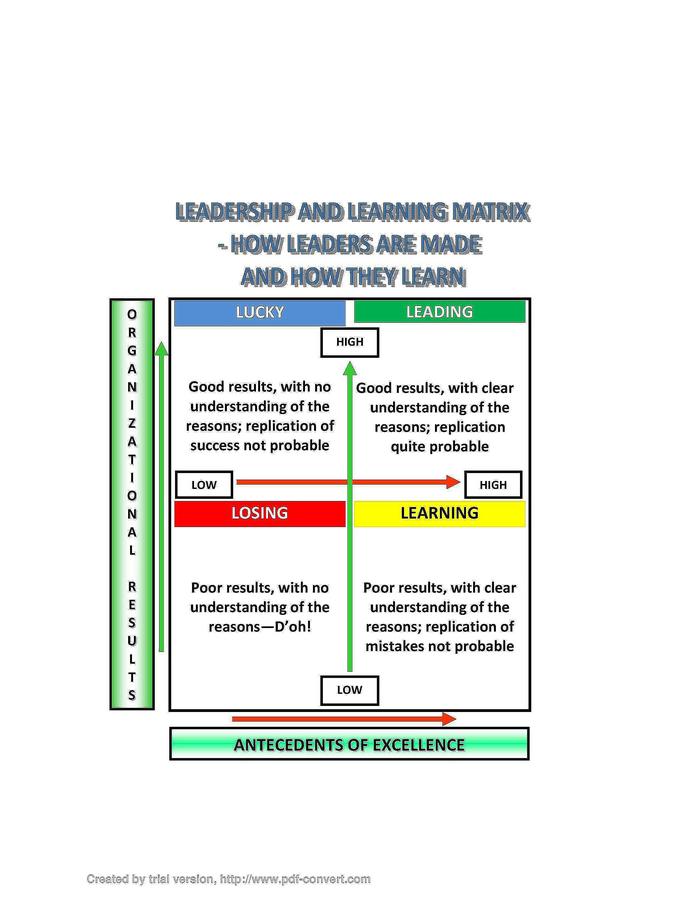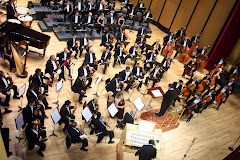Though they are extensively covered in the trade journals of repute and global standing, they go unnoticed by the management practitioners and students as well due to their cyclicity and quick progression from trend to trend, topic to topic and theme to theme.
#####################################################
On academic matters, the expertise and experience of the individual teacher must be respected, they reason.
After all, no school administrator can attain expertise in all academic areas.
There is a difference between a leader attempting to define the particulars of academic expectation in every area—an absurd demand for universal expertise—and the more reasonable expectation that the leader specify that academic requirements be clear, precise, and understandable.

Management honcho Tom Peters talks about B-Schools that run around like a headless chook
A PRINCIPAL NEED NOT BECOME
A CURRICULUM EXPERT
A principal need not become a curriculum expert in every academic area, but he certainly can picture himself in the place of his students and their parents.
From those perspectives, can all parties involved understand what success means?
Relying not on personal experience as a parent, teacher, student, or administrator, can they understand what students must know and be able to do to achieve success in a classroom?
If the answer is anything other than emphatically affirmative, then standards are an illusion.
The leader must build the bridge from chaos to clarity for every stakeholder so that students, teachers, parents, leaders, and the broad community know what success really means.
ACADEMIC FREEDOM DOES NOT MEAN
NO STANDARDS
If leaders fail to insist on standards, they may indulge in the illusion that they are fostering academic freedom.
In fact, they have created a vacuum in which fear, suspicion, uncertainty, and guess-work prevail.
It is this vacuum that legitimates the vocabulary of students who refer to grades as given rather
than earned. 
In the absence of standards-based leadership, students do not know what success means.
Parents do not know how to help.
Students who begin school with a comparative advantage are inappropriately complacent; students who begin school with a disadvantage are demoralized and unmotivated.
There is a risk in filling this vacuum with a leader’s clear and unambiguous expectation for academic standards.
First, any change represents risk, because change is uncomfortable.
Second, any assertion of leadership authority carries with it the risk of an accusation of authoritarianism, or at the very least loss of popularity for the leader.
The leader who equates success with comfort and popularity does not, as a result, succeed in implementing standards.
Against these risks, however, the leader must weigh the risk of inaction.
What percentage of your students are not proficient now?
What percentage of students are not sufficiently challenged?
What percentage of students receive grades that are inconsistent with their level of proficiency or are not related to the academic standards of your state?
These risks represent life-long consequences for the student, and inevitable consequences for the community and school.
THERE IS NO SUCH THING AS
A RISK-FREE CHOICE

Following the advice of this blog and transforming your leadership carries risk; closing the blog and doing nothing carries risk.
The choice is not to avoid risk, but to choose risk wisely and deliberately.
By choosing to embrace professional leadership based on academic standards, you accept the risk of unpopularity and discomfort.

This choice, however,improves the professional practice of teachers and leaders, instills a higher level of fairness for students, allows a significantly greater number of students to succeed, and challenges those students who are merely competitive without achieving academic standards.
*****************************************************
FACULTY PROFESSIONAL CIRCLES
---- GROWTH BEYOND
TRADITIONAL BARRIERS
Using the Professional Circle model, teachers can move from isolation to collaboration while pursuing goals with others who share similar interests. A Professional Circle offers teachers continued motivation, acknowledgment, and support of self- development efforts.
They have limited opportunities for contact with other adults at more than a superficial level.
Unlike most other professionals,teachers seldom are given the opportunity to have their accomplishments praised or critiqued by another adult except during the one or two administrative observations, which are often adversarial.
Grade level and subject area segregation, which seem to be an integral part of most school organizational patterns,tend to develop a hierarchical prestige factor.
Whether for reasons of ego or superiority, teachers from alleged higher prestige areas do not mingle with those from alleged lower prestige areas, except in a social setting.
This further isolates teachers from one another.

Bringing Teachers Together
The answer to the problem of teacher isolation may lie in the development of small teacher support groups called professional circles.
A variation of the quality circle concept taken from Japanese management techniques, the professional circle (P.C) is designed to cut across the traditional barriers that have led to teacher isolation.
The concept can be applied to any school setting: elementary or secondary, small or large.
Each P.C includes 10-12 teacher members representing all segments of the teacher population.
In organizing each P.C, the school administration must create a balance of experienced and less experienced teachers, teachers generally viewed as superior and those viewed as less than superior.
The P.C is developed for the teaching staff.
Bi-weekly meeting time is allocated to the professional circle in the same way time is set aside for general staff meetings or for departmental or grade level meetings.
The P.C must assume and be given that level of prestige.
The entire P.C concept will fail if it is allowed to function on an &dquo;as needed&dquo; basis.
The agenda for the bi-weekly P.C meeting must be limited to a discussion of instructional practices.
They are not gripe sessions, and the school should already have mechanisms for handling curriculum, discipline, administrative, and general management matters.
Members visit one another’s classrooms as non-threatening, non-evaluative observers who are able to provide feedback not only to the particular teacher but to the group.
Teachers not only have the opportunity to view different instructional models, but their own instructional programs are viewed from a new perspective.
Most important, the bulk of the observations are for support and improvement, not for evaluation.
The concept of the P.C can work.
Teachers need peer support, peer praise,and peer encouragement.
While most teachers agree that the primary satisfaction in teaching comes from the success they see in their students, they also acknowledge the need for peer recognition.
The professional circle does not remove administrators from the role of instructional supervisor.
In all probability, the existence of the P.C will make the administrator’s job a little easier.
***********************************************************






















